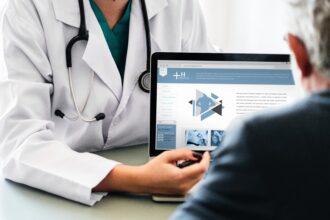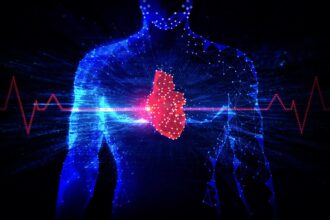The entire healthcare system has changed in the past couple of decades, and that can be contributed to the fact that medical technologies and devices have advanced and changed the way the medicine works in general. The more advanced the devices and medical processes, the faster we can cure and diagnose illnesses. However, that is not all. Medtech is not only changing the way medical professionals treat and cure, but also how they treat patients and deliver the best healthcare. In this article, we are going to introduce you to the benefits of the rise of medical technology, and the impact it has on healthcare and patients.
The Digitalization of Health Records
Electronic Health Records (EHRs)
have changed the way all medical professionals work when they replaced paper records. This implementation completely changed the game for doctors, nurses, assistants, even medical billing and coding. However, this also changed the way nurses and technicians study because now they are responsible for inputting hundreds and hundreds of data such as results, vital signs and medical records that may or may not affect the future treatments. Some of the benefits of EHR technology are the following:
Better Patient Care
If the hospital is using the EHR
then that means that if a patient takes a turn for the worse, the physician will be notified immediately. If the hospital admits a patient who is unconscious, then the facility would be able to access their medical history through the web of EHR.
Improved Public Health
Clinical researchers find the EHR data very valuable because they can show the development of certain illnesses, how they change throughout time and which medicine works on them the best. Also, the EHR system can help identify viral and bacterial infections, enabling the researchers to develop new treatments.
Easier Workflow for the Medical Staff
As we already said, the EHR impacted the billers and coders a lot, as the number of them recently jumped to almost 70,000. As you can see, the jump is huge and the digital technology allowed for a less time-consuming entering of the data into computers. Additionally, accessing patient records has never been faster and easier thanks to portable devices and efficiency of this new digital era.
Lower Healthcare Costs
According to a study from the University of Michigan, the EHR reduces the outpatient care costs by 3%,
The Rise of Use of Medical Devices
New technologies make it possible for technicians to capture important data but also to take better care of patients. Many medical devices have advanced so much that they can be purchased online, for instance, you can find some of the best quality stethoscopes at MediShopXL. These stethoscopes can help you check for your breathing and heart rate, or of someone you take care of at home. It has been estimated that the Global Medical Devices market will grow by $119B between 2018-2022. Advances in both pharmaceuticals and medicine have saved millions of lives, so it is no wonder that technology and medicine have cooperated for many years. One of the recent innovations is a Bluetooth enabled smart inhaler that helps asthma sufferers to manage their conditions easily. Apparently, it has been reported that more than 90% of sufferers do not use their inhalers properly thus worsening their conditions. This innovation helps them monitor their health easier. Robotic surgery has also been on the rise recently but only used in minimally invasive procedures. It is precise, flexible and easy to control. However, no need to worry because this is not about robots performing surgeries because real surgeons are the ones doing the complex procedures while the robotic technology helps out. Another great invention worth mentioning is definitely the MelaFind (MELA Sciences) technology that helps to scan the surface of your skin without damaging it in order to tell whether it has melanoma (cancer) or not. This reduces the biopsy scars and it is a lot faster and easier to use. This technology consists of complex algorithms that process collected signals against a registry of more than 10,000 digital pictures of various skin diseases and cancers. The electronic aspirin will come in handy to those suffering from migraines and cluster headaches. The treatment for severe chronic forms of headache has not been found yet but a new tool for blocking the signals that turn into a migraine has been invented by the Autonomic Technologies, Inc. This tool is a small implant that is inserted inside the head where it connects to the SPG bundle. When you sense a headache coming, you use a remote controller, place it as nearest to the implant and the remote will block the neurotransmitters that cause the terrible pain. A self-care of a person suffering from diabetes is tiring; however, here it comes a needle-free diabetes tool that helps you monitor the glucose levels without drawing any blood. Regular poking can cause infection including all those daily insulin shots, but this biosensor from Echo Therapeutics might change the game forever. Robotic check-ups are also becoming popular. New medical robots are able to patrol hospital hallways and perform routine rounds by checking on patients and managing vital charts. The robot in question is actually a mobile cart with a two-way video screen. But will it be able to really replace human technicians? We will wait and see.
Conclusion
To sum up, we have talked about the rise of medical technology and equipment in general and how it impacted the patient approach. We mentioned stethoscopes, as they are the ones of the most used devices in the medical field by both the doctors and nurses. Nowadays you can purchase the most advanced online and learn how to easily check for your breathing and heart rate at home. We have also mentioned other innovations that made the lives of people suffering from asthma, allergies, and diabetes easier. What is the most important, is that all those devices have not only made the diagnosis and treatment easier but they also made it easier for doctors to treat patients with better care and spend more time with them.









